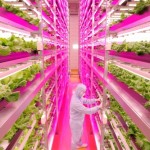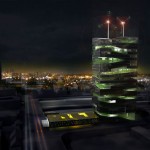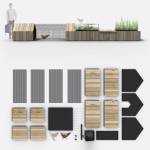[ By WebUrbanist in Architecture & Cities & Urbanism. ]

A Dutch firm on the cutting edge of indoor agriculture estimates that producing food for the entire world could take place in a space far smaller than the area occupied by Holland, using just 10% of the water needed by traditional farms. The proposal is not without precedent – Japan already has one prototype urban farm that is 100 times more productive than farmers’ fields.


Noting that the vast majority of people will live in cities in the coming decades, PlantLab suggests a solution that involves using existing basements and purpose-built structures for our future food production. This means less energy, space, time and water than conventional methods.


Urban farming in controlled environments lets growers take full advantage of variables like custom lighting, using far-red LED lamps that reduce moisture requirements for plants. Naturally, interior spaces are also free from the uncontrolled variables of weather and pests as well, increasingly reliability.


Automatic systems can optimize yields based on crop types, making indoor farms more effective than greenhouses and far more productive than fields. The ever-increasing efficiency and lowering costs of LEDs mean this method will only become more viable over time.




[ By WebUrbanist in Architecture & Cities & Urbanism. ]
[ WebUrbanist | Archives | Galleries | Privacy | TOS ]



You must be logged in to post a comment.